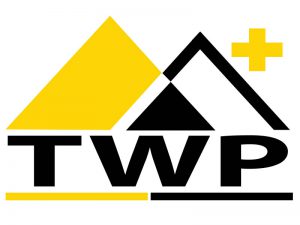Proof Of Stake Definition, What Is Proof Of Stake, Advantages Of Proof Of Stake, And Latest News
And, the consensus mechanism is the tactic used to succeed in this agreement Ethereum Proof of Stake Model i.e. nodes or peers determining the validity of every transaction. The important upfront cost required to buy a community stake is the biggest drawback of proof of stake. Due to the algorithm weight used to select the validator, those with the greatest cash could have the most energy. A validator will get a reproduction copy of their stake if a blockchain forks since there is no efficiency historical past.
- The subsequent step to turning into a validator and earning block rewards is making a node.
- This approach is a substitute to proof of work, the primary cryptocurrency consensus process devised.
- In areas of the global economic system where there’s unanimity, a subjective currency may be useful.
- It is used for verifying transactions while simultaneously maintaining the security of the blockchain.
- Proof of stake becomes a subjective consensus technique with this resolution.
- PoS blockchains are notably helpful for purposes that require low transaction latency.
Can The Proof-of-stake Be Used As An Preliminary Consensus Mechanism?
A miner who confirms a block adds it to the chain is paid in bitcoin along with their preliminary investment, and the block is added to the chain. The miner’s stake or cash might be misplaced in the occasion that they incorrectly confirm the block. The way the blockchain algorithm selects and qualifies customers for contributing transactions to the blockchain is the primary distinction between proof of labor and proof of stake.
How Does Proof Of Stake Change The Ethereum Blockchain?

The coin was initially created as an ERC20 token, nonetheless it’s now out there on Binance Chain (BEP2 Standard). It launched NOW Staking in 2020 as a means to earn from proudly owning NOW tokens. NOW Staking pays as much as 25% in annualized rate, providing this one of the tokens with the greatest predicted return.
Security Implications Of Proof Of Stake For Web3

Proof of Stake also makes the complete Crypto incomes experience extra scalable and environment friendly. These days every cost platform needs to make sure all transactions are respectable and no one spends the identical money twice. On centralised platforms like Visa and Mastercard, that is carried out by the central authority. But when there isn’t a central authority like on a blockchain, consensus mechanisms come into the picture. The two hottest mechanisms you could have heard of are Proof of Work (PoW) and Proof of Stake (PoS). Let’s perceive the terms and how they are completely different from one another.
Explained: In Crypto Mining, What’s Proof Of Work And Proof Of Stake Mechanism?

Proof of Stake (PoS) is a consensus algorithm used in blockchain networks to validate transactions and create new blocks. The most popular one is the proof-of-work (PoW) consensus mechanism. It is utilized by the 2 greatest cryptocurrencies out there, Bitcoin and Ethereum. In PoW, nodes must solve complex computational puzzles to add new blocks within the blockchain and add transactions on the network. Nodes usually use energy-intensive computational hardware to resolve these puzzles, and the first one to unravel the puzzle and add blocks is rewarded in bitcoin tokens. PoW mining has come under important scrutiny prior to now year or so as a end result of its energy consumption and the subsequent carbon footprint it leaves behind.

These mechanisms hold the blockchains safe by letting only genuine customers add transactions. So let’s attempt to perceive what these two strategies are all about. PoW is used by major blockchain networks like Bitcoin, and Ethereum, among other public blockchains.

Prime 5 Benefits Of Delegated Proof-of-stake (dpos)
This process relies on several factors such because the variety of tokens staked, complete staking time and validation history. The Proof of Stake algorithm permits customers to have interaction with the blockchain and assist safe it. Users taking part within the validation must lock of their digital belongings. Proof of Stake is somewhat much like depositing cash in your bank accounts where interest is generated on the idea of the length and amount it’s being held.
This could be any software pockets from providers like Metamask or some crypto exchange. Proof of Stake tends towards being more decentralised than Proof of Work. This prompts customers to try to purchase essentially the most highly effective hardware and dominate the blockchain.
This mechanism could be a powerful software for validating a transaction. The variety of miners will increase along with the worth of the crypto asset. Because of the large number of miners contributing their computing energy, no particular person has the capacity to change a blockchain. This is a tried and tested technique that has seen many other adopters such as Ethereum 1.zero (ETH), Monero (XMR), and Litecoin (LTC).
In areas of the global economy the place there’s unanimity, a subjective currency can be helpful. However, to close the hole between any two pockets of micro-economies, or more generally between any two people worldwide, requires international agreement. That is completed via an objective consensus process, not a subjective one. But what exactly is Proof of Work, and the way totally different is it from Proof of Stake, its nearest counterpart? If you are feeling overlooked from these two very elementary concepts in cryptocurrency, we have you lined.
Ethereum is most likely not essentially the most lucrative, but it’s the largest extensively used proof of stake cryptocurrency. At the current, the Ethereum network is the most well-liked and in-demand decentralized cryptocurrency. The bulk of members participate in staking pools for this reason.
Read more about https://www.xcritical.in/ here.

